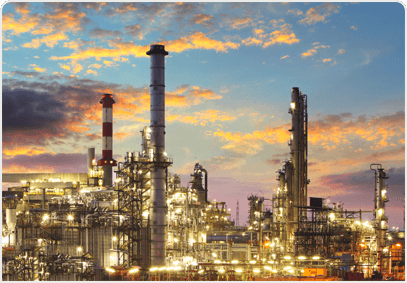Unknown Facts About Roar Solutions
Unknown Facts About Roar Solutions
Blog Article
Roar Solutions - The Facts
Table of ContentsThe smart Trick of Roar Solutions That Nobody is Talking AboutThe Ultimate Guide To Roar SolutionsIndicators on Roar Solutions You Should Know
In order to secure installations from a prospective explosion a technique of evaluating and categorizing a possibly dangerous location is called for. The objective of this is to make sure the appropriate choice and installment of equipment to ultimately avoid an explosion and to guarantee security of life.
(https://profile.hatena.ne.jp/roarsolutions/)
No tools must be installed where the surface temperature level of the devices is higher than the ignition temperature of the provided threat. Below are some common dirt unsafe and their minimum ignition temperature. Coal Dirt 380C 225C Polythene 420C (melts) Methyl Cellulose 420C 320C Starch 460C 435C Flour 490C 340C Sugar 490C 460C Grain Dust 510C 300C Phenolic Resin 530C > 450C Aluminium 590C > 450C PVC 700C > 450C Residue 810C 570C The likelihood of the risk existing in a focus high adequate to cause an ignition will differ from area to location.
In order to identify this danger an installment is split right into areas of risk relying on the amount of time the unsafe exists. These areas are referred to as Areas. For gases and vapours and dirts and fibers there are three areas. Area 0 Zone 20 An unsafe atmosphere is extremely likely to be present and might be existing for extended periods of time (> 1000 hours each year) and even continually Area 1 Area 21 A hazardous atmosphere is possible but unlikely to be present for extended periods of time (> 10 450 C [842 F] A classification of T6 implies the minimum ignition temperature level is > 85 C [185 F] Unsafe location electric devices perhaps created for use in greater ambient temperature levels. This would certainly suggested on the score plate e.g. EExe II C T3 Ta + 60C( This implies at 60C ambient T3 will certainly not be exceeded) T1 T1, T2, T3, T4, T5, T6 T2 T2, T3, T4, T5, T6 T3 T3, T4, T5, T6 T4 T4, T5, T6 T5 T5, T6 T6 T6 A T Course score of T1 suggests the optimum surface area temperature generated by the instrument at 40 C is 450 C. Thinking the associated T Class and Temperature level rating for the equipment are appropriate for the location, you can constantly utilize an instrument with an extra rigorous Division rating than required for the area. There isn't a clear response to this question. It actually does depend upon the type of tools and what repairs require to be accomplished. Equipment with specific examination procedures that can not be done in the field in order to achieve/maintain 3rd party ranking. Need to come back to the manufacturing facility if it is before the equipment's solution. Field Repair By Authorised Employee: Challenging testing may not be required however details procedures may require to be followed in order for the tools to official statement maintain its 3rd party score. Authorised workers must be used to perform the job correctly Fixing should be a like for like substitute. New component need to be considered as a straight replacement needing no unique screening of the equipment after the repair service is full. Each tool with a dangerous rating should be evaluated individually. These are described at a high level listed below, however, for more in-depth info, please refer directly to the standards.
Roar Solutions - Truths
The devices register is a comprehensive database of equipment records that includes a minimum collection of fields to recognize each item's location, technological specifications, Ex classification, age, and ecological data. The ratio of In-depth to Close examinations will certainly be determined by the Equipment Risk, which is evaluated based on ignition risk (the possibility of a source of ignition versus the likelihood of a flammable environment )and the dangerous area classification
( Zone 0Area 1, or 2). Carrying out a durable Risk-Based Inspection( RBI )technique is critical for guaranteeing conformity and safety in managing Electrical Tools in Hazardous Areas( EEHA).
Some Known Incorrect Statements About Roar Solutions

In regards to eruptive risk, a dangerous area is an atmosphere in which an eruptive environment is present (or may be expected to be present) in amounts that call for unique preventative measures for the building and construction, installment and use equipment. Roar Solutions. In this article we explore the obstacles encountered in the work environment, the danger control steps, and the required expertises to function safely
It is a consequence of modern life that we manufacture, store or deal with a series of gases or fluids that are considered combustible, and a variety of dusts that are considered combustible. These substances can, in particular problems, develop eruptive atmospheres and these can have significant and tragic effects. The majority of us know with the fire triangle remove any among the three components and the fire can not take place, but what does this mean in the context of unsafe locations? When damaging this down right into its easiest terms it is basically: a combination of a specific quantity of release or leak of a specific substance or product, blending with ambient oxygen, and the visibility of a source of ignition.
In most instances, we can do little concerning the levels of oxygen in the air, yet we can have considerable influence on sources of ignition, for instance electric equipment. Hazardous areas are recorded on the unsafe area classification illustration and are identified on-site by the triangular "EX-SPOUSE" sign. Right here, amongst other essential details, areas are divided into three types depending upon the threat, the possibility and duration that an explosive ambience will certainly exist; Area 0 or 20 is deemed the most dangerous and Zone 2 or 22 is considered the least.
Report this page